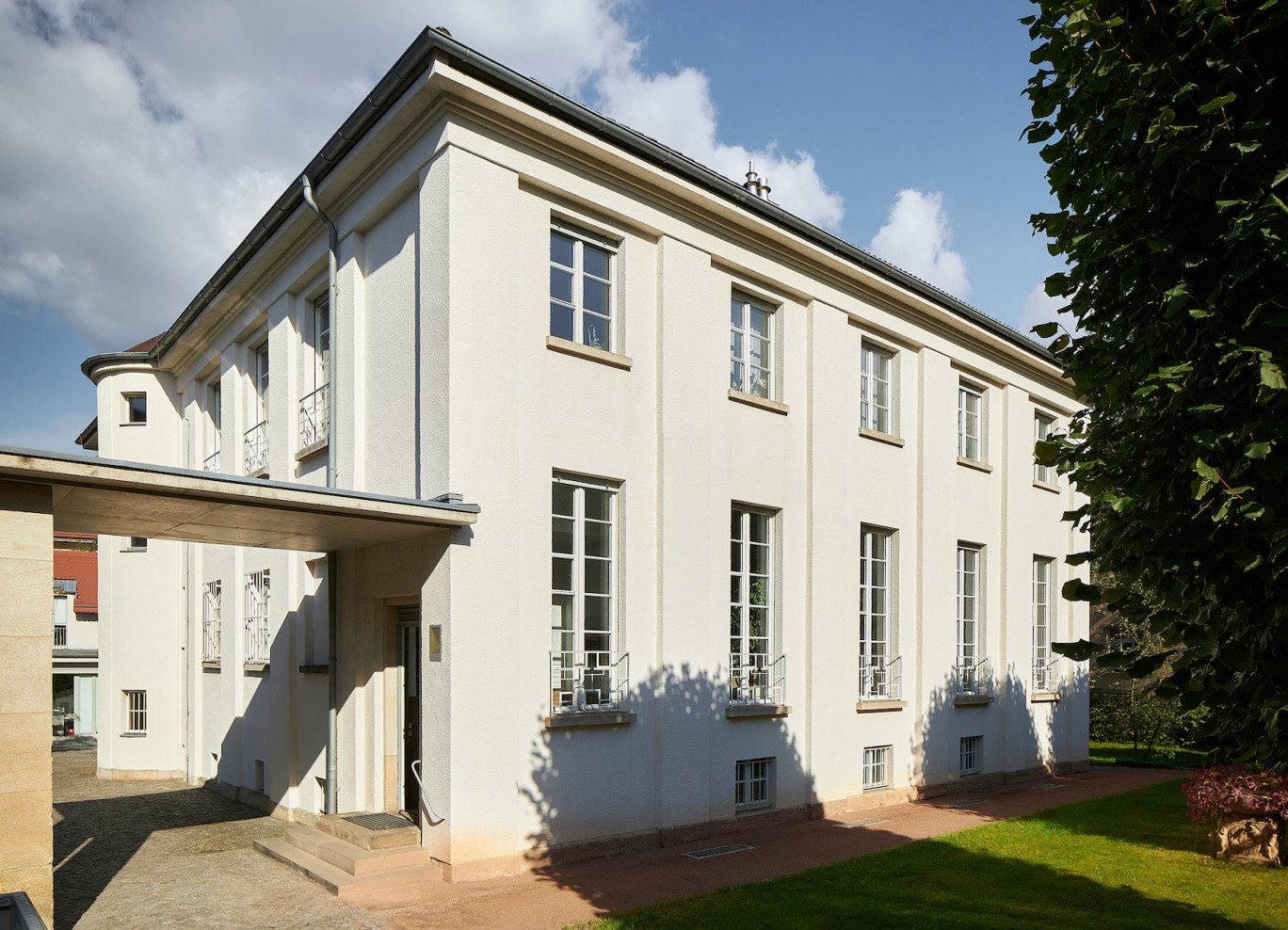Bruno Paul
From December 6, 2022 to March 3, 2023, the Saxony Chamber of Architects will honor the work of architect Bruno Paul with an exhibition curated by designer and art historian Thomas Drebusch. The studio for architecture Bruno Paul was significantly involved in the design of the building, which the cigarette manufacturer Carl Bergman had built in 1928 as a private residence and which today houses the Saxony Chamber of Architects.
Bruno Paul (1874–1968) studied at the Academy of Arts in Dresden and the Academy of Fine Arts in Munich. Around 1900 he was a popular caricaturist for the magazine Simplicissimus in Munich. In addition, he designed everyday objects, furniture, interiors and the furnishings of some luxury liners, for which he received numerous awards. In 1906 he was appointed head of the educational institution at the Kunstgewerbemuseum in Berlin. From 1924 he was the first director of the United State Schools for Free and Applied Arts in Berlin, in which the educational institution at the Museum of Decorative Arts and the Academy of Fine Arts were merged with an expanded educational concept.
In 1907 he was a co-founder of the Deutscher Werkbund and in the same year he realized his first architectural design in Berlin's Westend. Well-known architects such as B. Ludwig Mies van der Rohe or Adolf Meyer spent their “apprenticeship years” in the studio for architecture Bruno Paul. In 1919 he was accepted as a full member of the Prussian Academy of Arts. In the first third of the 20th century, the studio for architecture Bruno Paul was one of the most sought-after addresses for the upper bourgeoisie looking to build and was one of the pioneers of modern architecture in Germany. The residential buildings he planned in Berlin, Duisburg, Dresden, Frankfurt, Hamburg, Königsberg, Königstein, Munich, Prague, Soest, Strasbourg, Wetzlar and Wiesbaden were mostly designed as total works of art, since the drafts for the interior furnishings and the garden design were also realized. Department stores were built in Essen, Gelsenkirchen and Cologne, and in 1928 the Kathreiner high-rise was built as the first high-rise administrative building in Berlin based on plans by the Bruno Paul studio for architecture.
Due to the political changes, Bruno Paul resigned his position as director of the combined state schools for free and applied arts in Berlin on December 31, 1932. In July 1937 he was urged, along with other members, to resign from the Prussian Academy of Arts. In the 1930s, administration buildings, housing estates and factory buildings as well as furniture designs for the Deutsche Werkstätten in Dresden-Hellerau formed the focus of his creative work. After 1945 he shifted his activities to the area of civil engineering and designed e.g. bridges such as B. the Weser Bridge in Holzminden. In 1955 he was one of the founding members of the Academy of Arts in Berlin.
